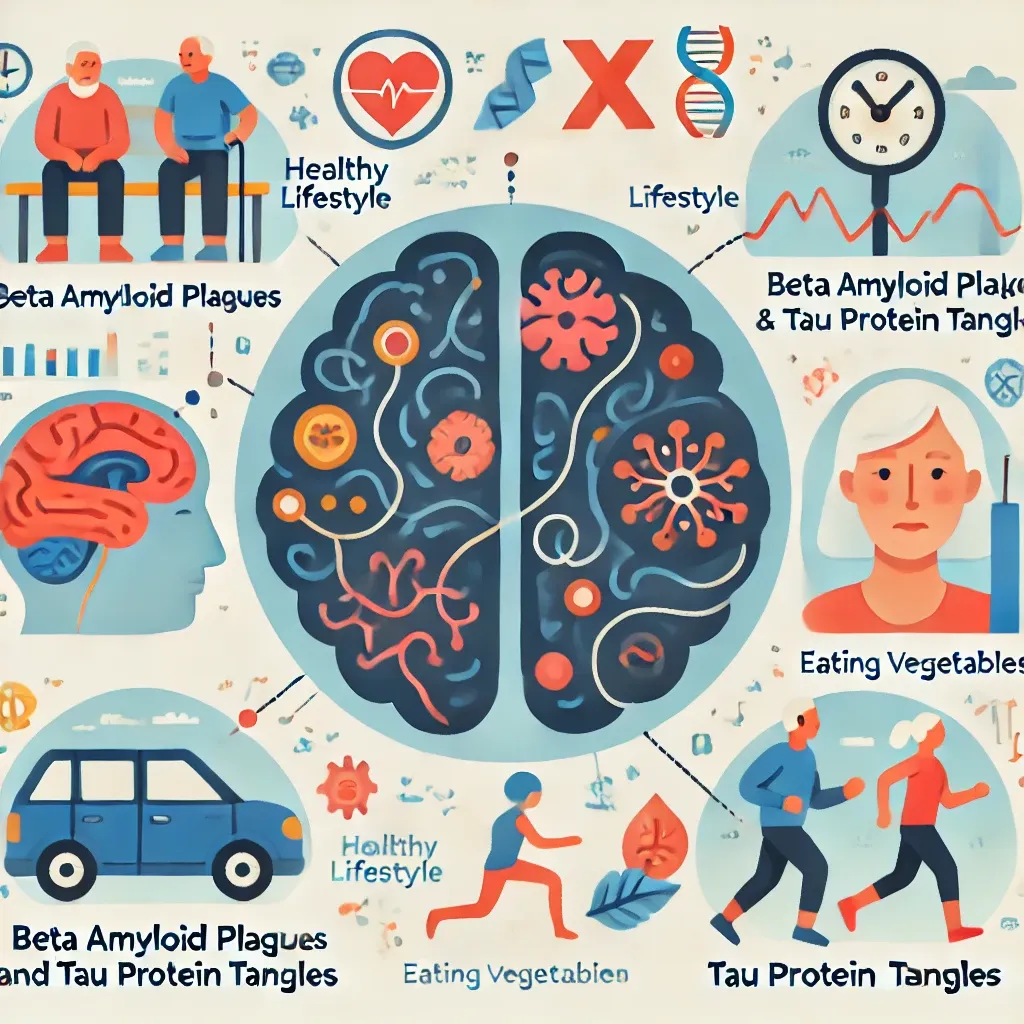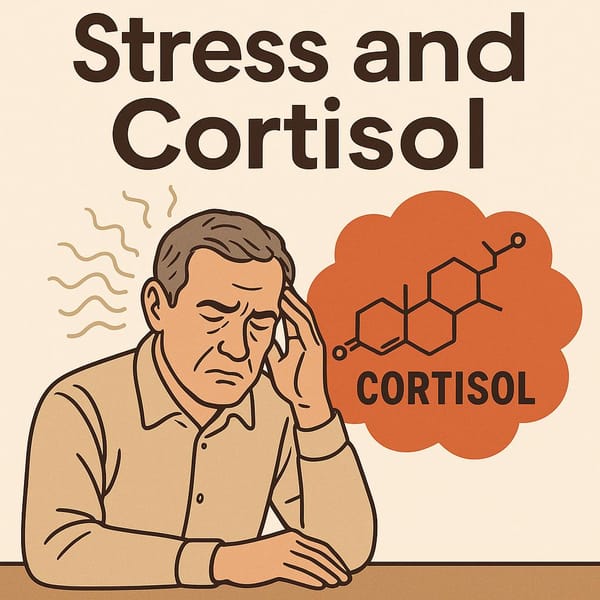Beta Amyloid and Tau Protein: Understanding the Culprits Behind Cognitive Decline in Older Adults
Beta Amyloid and Tau Protein are major factors behind cognitive decline in older adults. Learn about prevention strategies, brain health tips, and cutting-edge research in this article.

Introduction
As we age, our bodies and minds inevitably undergo various changes. One major health concern among older adults is dementia, which can lead to memory loss, reduced learning capacity, and difficulties in performing daily tasks. Two key substances often cited as prime contributors to cognitive decline are Beta Amyloid and Tau Protein. Both play significant roles in the development of Alzheimer’s disease and other forms of dementia.
Although Beta Amyloid and Tau Protein may sound intimidating or overly scientific, it is essential for older adults and caregivers alike to understand the basics: what they are, how they form, and how they affect the brain. Armed with this knowledge, families and healthcare providers can better preserve and support cognitive function. In this article, we will delve into Beta Amyloid and Tau Protein, exploring everything from their biological processes and risk factors to prevention strategies and ways to maintain a high quality of life.
To ensure the accuracy and usefulness of this article, we have referenced medical data from reputable sources including the Alzheimer’s Association, National Institutes of Health (NIH), and the World Health Organization (WHO). We will also discuss practical approaches for managing cognitive health, covering nutrition, exercise, proactive lifestyle changes, and stress management.
Body Content
1. What Is Beta Amyloid?
Beta Amyloid is a protein fragment formed from the breakdown of a larger protein in the neuronal cell membrane, known as Amyloid Precursor Protein (APP). In a healthy brain, Beta Amyloid is transported and cleared to some extent. However, when the production of Beta Amyloid surpasses the brain’s ability to remove it, these fragments begin to aggregate into clusters called plaques, which can disrupt neuronal function and lead to cognitive decline.
1.1 Formation of Beta Amyloid
- Starting with APP (Amyloid Precursor Protein): APP is a protein found in the neuronal cell membrane, involved in cell growth and signal transmission.
- Protein-cleaving enzymes (Secretases): Enzymes such as Beta-secretase and Gamma-secretase cut APP, creating various fragments, including Beta Amyloid.
- Plaque formation: When Beta Amyloid does not dissolve properly, it starts to clump together into small aggregates that grow larger over time. As plaques accumulate, neighboring neurons are gradually damaged.
1.2 Effects of Beta Amyloid on the Brain
- Generation of free radicals: Plaques can induce inflammation and oxidative stress, damaging brain cells.
- Interruption of neuronal communication: Plaque build-up harms brain tissue and disrupts the electrical and chemical signals between neurons.
- Accelerated degeneration: Prolonged exposure to plaques hinders the brain’s repair mechanisms, leading to progressive neuronal damage.
2. What Is Tau Protein?
Tau Protein helps stabilize the microtubules within neurons. Microtubules act as the cell’s internal transport system, delivering nutrients and other molecules. Under normal conditions, Tau Protein is regulated in a way that keeps these microtubules intact, preventing them from breaking or twisting.
However, in abnormal situations such as Alzheimer’s disease, Tau Protein undergoes a modification known as hyperphosphorylation, causing it to aggregate into neurofibrillary tangles inside the neuron. These tangles disrupt the transport system, preventing nutrients and signals from moving efficiently, ultimately leading to severe cell damage.
2.1 Formation of Neurofibrillary Tangles
- Structural change in Tau: Excess phosphate groups are added (hyperphosphorylation), altering the Tau Protein.
- Tau clumping: Modified Tau no longer binds effectively to microtubules, instead adhering to itself and forming tangled threads.
- Transportation shutdown: When Tau fails to uphold the microtubule network, neurons lose their ability to transport signals and nutrients effectively.
2.2 Effects of Tau Protein on the Brain
- Structural breakdown: Tangles lead to the collapse of the cell’s internal framework.
- Neuronal death: When the transport system fails, neurons eventually die and cannot regenerate like other cell types.
- Synergy with Beta Amyloid: Research shows that patients with Alzheimer’s often exhibit both Beta Amyloid plaques and neurofibrillary tangles, amplifying the detrimental effects on the brain.
3. The Relationship Between Beta Amyloid and Tau Protein
Beta Amyloid and Tau Protein are frequently described as the “two pillars” of Alzheimer’s disease. In reality, dementia stems from a multitude of factors, not just these two proteins. Nevertheless, plaque and tangle formation represent crucial steps that trigger a “chain reaction” of inflammation and widespread neuronal degeneration.
3.1 The Inflammatory Cycle
As Beta Amyloid plaques and Tau Protein tangles emerge, specialized brain cells such as microglia and astrocytes, responsible for “protecting” the brain, work overtime to reduce these abnormal accumulations. However, an unintended consequence can be the release of pro-inflammatory substances. When inflammation occurs, some neurons suffer damage, leading to even more Beta Amyloid and Tau Protein production.
3.2 The Vicious Cycle of Degeneration
Studies from the NIH indicate that both Beta Amyloid and Tau Protein can disrupt neuronal function on a large scale, including key neurotransmitters like acetylcholine. People with dementia often exhibit memory problems, impaired decision-making, and significant mood swings.
4. Risk Factors for Beta Amyloid and Tau Protein Accumulation
While the production of these proteins can happen naturally, certain risk factors accelerate their harmful build-up and early onset of dementia:
- Age: The older we get, the more prone the brain is to accumulating Beta Amyloid and Tau Protein, partly due to diminishing waste-clearance mechanisms.
- Genetics: Specific genes, such as ApoE4, can increase the likelihood of developing Alzheimer’s. Genetic testing may help assess your risk.
- Cardiovascular health: Heart disease, high blood pressure, diabetes, and high cholesterol can all reduce blood flow to the brain, hindering the clearance of abnormal proteins.
- Lifestyle choices: Physical inactivity, diets high in trans fats and sugars, smoking, and excessive alcohol consumption can fuel inflammation and neuronal damage.
- Head injuries: A history of severe traumatic brain injury increases the risk of abnormal Beta Amyloid and Tau Protein accumulation.
- Chronic stress: Long-term elevated cortisol levels (a stress hormone) can impair the brain’s protective systems and heighten inflammation.
5. Preventing or Slowing Beta Amyloid and Tau Protein Buildup
Although there is currently no absolute cure for Alzheimer’s or dementia related to Beta Amyloid and Tau Protein, several practical strategies can help reduce or slow disease progression:
5.1 Nutrition
- Mediterranean diet: Numerous studies suggest that a diet rich in vegetables, fruits, whole grains, fish, and olive oil helps delay cognitive decline and reduce inflammation.
- Avoid trans fats: Consuming deep-fried foods or baked goods high in trans fats can trigger systemic inflammation.
- Limit sugar: Chronically high blood sugar levels can hinder the brain’s ability to remove abnormal proteins.
- Antioxidant-rich foods: Include vitamins E, C, and beta-carotene from foods like berries, carrots, spinach, and other fresh produce.
5.2 Regular Exercise
- Aerobic activities: Brisk walking, light jogging, swimming, or cycling boost blood flow and oxygen delivery to the brain, helping clear Beta Amyloid and Tau Protein.
- Strength training: Resistance exercises, such as lifting weights or using resistance bands, can improve hormone balance and lower stress.
- Mindfulness practices (yoga, meditation): Reduce stress, enhance focus, and potentially curb inflammation in the brain.
5.3 Cognitive Training
- Reading or memory games: Stimulate neurons to create new networks.
- Learning new skills: Acquiring a new language, learning to play a musical instrument, or engaging in arts and crafts all challenge the brain to adapt.
- Social engagement: Regular interaction with friends or group activities is associated with better long-term cognitive health.
5.4 Quality Sleep
- Adequate rest: The brain’s glymphatic system, which removes waste (including Beta Amyloid), functions most effectively during sleep.
- Consistent sleep schedule: Stabilizes bodily rhythms and hormone levels linked to inflammation.
- Minimize blue light exposure: Reduce screen time before bed, as blue light can inhibit melatonin release, causing poor sleep quality.
5.5 Regular Medical Check-ups
- Blood sugar and lipid profile: Monitoring these can help manage diabetes and cerebrovascular risks.
- Cardiac health: A healthy heart ensures adequate blood and oxygen supply to the brain.
- Professional consultations: If you have a genetic predisposition (e.g., ApoE4) or a history of severe head trauma, work with specialists for regular assessments.
6. Modern Medical Approaches to Beta Amyloid and Tau Protein
Significant research is underway to develop targeted treatments and vaccines against Beta Amyloid and Tau Protein. Monoclonal antibodies may help reduce Beta Amyloid levels, while inhibitors can potentially curb Tau Protein tangling. Although a definitive cure does not yet exist, early diagnosis and appropriate treatment regimens can noticeably delay cognitive decline.
6.1 Diagnostic Methods
- PET scan (Positron Emission Tomography): Detects Beta Amyloid and Tau Protein deposits in the brain.
- CSF test (Cerebrospinal Fluid Test): Measures Beta Amyloid and Tau Protein levels in the cerebrospinal fluid, offering precise risk evaluation.
- MRI (Magnetic Resonance Imaging): Checks brain structure; marked shrinkage in certain areas can indicate dementia.
6.2 Technological Advancements
- Digital health tracking: Some apps monitor sleep, exercise, and cognitive games to provide preliminary insights into brain performance.
- Telemedicine: Allows older adults with mobility constraints to consult specialists and receive ongoing care remotely.
7. Care and Support for Individuals with Dementia
Beyond preventing and treating abnormal protein deposits, providing quality care to people with dementia is crucial. Caregivers and families should focus on improving patients’ safety and quality of life.
- Safe environment: Keep living spaces organized, well-lit, and equipped with signs or reminders to reduce falls and confusion.
- Mental health support: Patients may experience mood swings; providing opportunities for self-expression or group activities can help alleviate stress.
- Tailored nutrition: Ensure adequate protein and antioxidant intake while considering chewing or swallowing difficulties in advanced stages.
- Engaging in daily activities: Routine tasks can stimulate memory and reduce depressive symptoms.
- Community support: Joining dementia caregiver groups or support organizations can foster mutual encouragement and knowledge sharing.
8. Recent Research Highlights (Scientific References)
- University College London (UCL): Found that controlling blood pressure and lipid levels in individuals at risk for Alzheimer’s can reduce the long-term accumulation of Beta Amyloid plaques.
- Published in Nature Medicine: Showed that severely modified Tau Protein in the brain may be a bigger factor in accelerating neuronal damage than high levels of Beta Amyloid alone.
- AI in diagnosis: Machine learning models analyze Beta Amyloid and Tau Protein patterns in PET scans, offering more accurate screening for at-risk patients.
Conclusion
Cognitive decline in older adults, most notably Alzheimer’s disease, is a growing public health concern. Beta Amyloid and Tau Protein are primary drivers of the pathological processes in the brain. However, it is possible to reduce or slow the progression of dementia through lifestyle measures such as balanced nutrition, regular exercise, cognitive training, effective stress management, and routine health check-ups. Moreover, advancements in modern medicine offer increasingly proactive diagnostic and treatment options.
The key is to educate and inform patients, caregivers, and the broader community so that older individuals at risk—or those already experiencing early signs of dementia—receive proper care and enjoy a better quality of life for as long as possible.
Disclaimer: This article is intended for informational purposes only and does not substitute for professional medical advice. If you have any health concerns, consult a qualified healthcare provider.
We hope this article proves beneficial to all readers. For more information or inquiries, please visit the Alzheimer’s Association and the World Health Organization.



